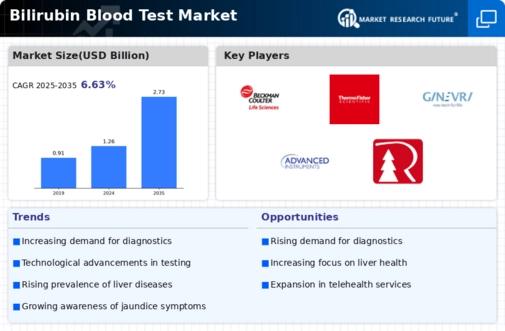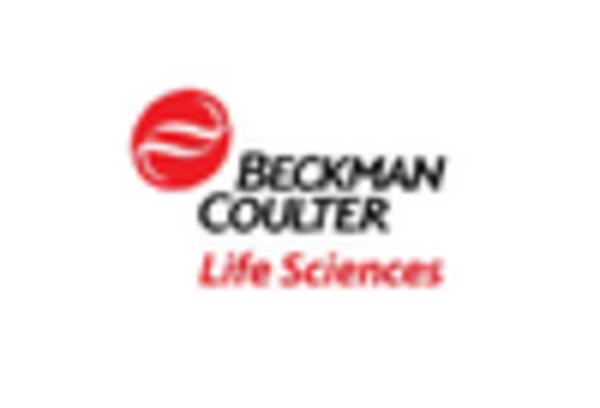Market Trends
Key Emerging Trends in the Bilirubin Blood Test Market
Jaundice, a common occurrence in newborns, manifests as a yellow discoloration of the skin and eyes due to elevated levels of bilirubin in the bloodstream, a condition known as hyperbilirubinemia. American Family Physician (AFP) reports that approximately 50% of full-term and 80% of preterm infants experience jaundice within the first week of life. It stands as the most prevalent condition necessitating medical attention in newborns and is a leading cause for hospital readmission following early discharge. The prevalence of neonatal jaundice in infants has led to an increased demand for bilirubin blood test devices and consumables, essential for the accurate diagnosis and treatment of newborns.
Jaundice in newborns can stem from various factors, including physiologic jaundice, breast milk jaundice, and jaundice resulting from hemolysis. Physiologic jaundice, a common occurrence, is typically a transient and benign condition resulting from the immature liver's inability to efficiently process bilirubin. Breast milk jaundice, on the other hand, is a prolonged form of jaundice associated with breastfeeding and is not typically harmful. Jaundice arising from hemolysis, where red blood cells break down excessively, can lead to an increased production of bilirubin.
The importance of timely and accurate diagnosis of neonatal jaundice cannot be overstated, considering its widespread occurrence and potential complications. The bilirubin blood test serves as a crucial diagnostic tool, allowing healthcare professionals to assess bilirubin levels in a newborn's blood and determine the appropriate course of action.
Given the high incidence of jaundice in both full-term and preterm infants, medical professionals often encounter cases that require intervention. The severity and duration of jaundice can vary, necessitating careful monitoring and, in some cases, treatment to prevent complications. In instances where bilirubin levels are significantly elevated, interventions such as phototherapy or, in severe cases, exchange transfusion may be recommended.
The demand for bilirubin blood test devices and consumables has witnessed a notable surge due to the critical role they play in the management of neonatal jaundice. These devices enable quick and accurate assessments of bilirubin levels, facilitating timely interventions and ensuring the well-being of newborns.
Neonatal jaundice is a prevalent condition affecting a significant percentage of newborns, emphasizing the need for effective diagnostic tools and interventions. The bilirubin blood test devices and consumables have become indispensable in the medical arsenal, enabling healthcare professionals to diagnose and manage jaundice in newborns efficiently. As advancements in medical technology continue, these tools are likely to evolve, contributing to enhanced care and outcomes for infants affected by jaundice.









Leave a Comment